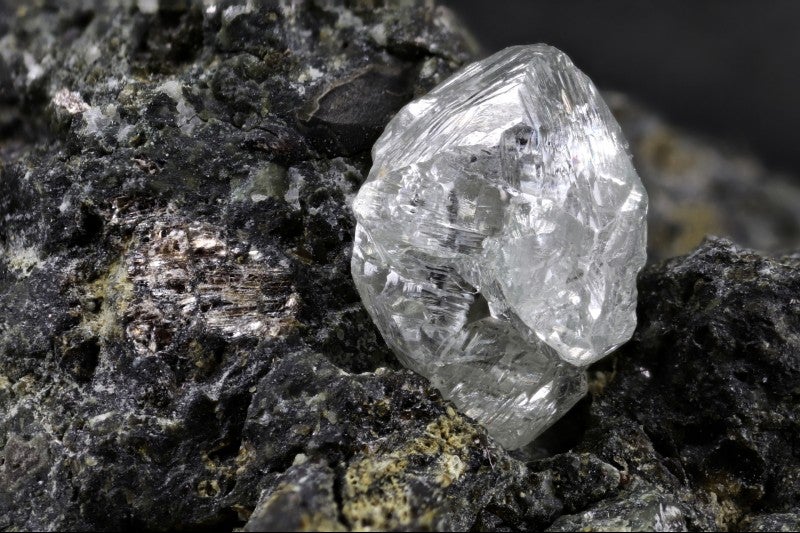According to leading diamond producer Alrosa, 2020 started well for the diamond sector, citing improved customer sentiment across key markets for diamond jewellery, a recovery in prices for polished diamonds and that sales were ‘quite robust’ in December and January.
However, the initial outbreak of Covid-19 led to a fall in demand from the Chinese market, which is reported to account for 15% of global demand. The spread of the virus in China and ensuing quarantine measures meant the majority of jewellery stores were closed for around two months.
Diamond sales
Given the spread of the virus, quarantines and declining economic conditions, it was inevitable that demand for luxury items such as diamonds would fall. In early March, De Beers, the world’s second-largest producer, reported a 28% year-on-year decline in sales, at $355m down from $496m in 2019, during its second sales cycle of 2020 as Covid-19 impacted the Chinese market. This compared with $551 in the first sales cycle of 2020, with 12 sales cycles in a year.
There have been additional challenges for sales. Since the virus has spread to other parts of the world, limitations on travel are impacting sales events, with, for example, De Beers, cancelling a sales event, its third ‘sight’ of the year, due to take place
from 30 March to 3 April. The company advised it was “enabling Sightholders to defer 100% of their Sight 3 allocations to later in the year, and will continue to seek innovative ways to meet Sightholders’ rough diamond supply needs in the coming
weeks”. It has also closed stores in London, Paris, US, Canada, Russia, Kazakhstan, Malaysia and Saudi Arabia until further notice.
Alrosa is looking at the option of online trade as global travel restrictions make the usual physical inspection of diamonds almost impossible. In its Q1 results, released on 16 April, the company reported a mixed quarter for sales. Total rough and polished diamond revenues in Q1 2020 were $904.2m, down 10% year-on-year, although this was due to much lower revenues in March, at $153m, compared with $377m in March 2019. January and February 2020 together were $751m, 19.8% higher than the corresponding period in 2020. Sales volumes also fell year-on-year in the quarter, down by 11% from 10,592k carats in Q1 2019 to 9,421k carats in Q1 2020.
Production
Diamond production in 2020 is being affected by operating restrictions in many countries. South Africa, for example, initially entered into a lockdown for three weeks from 26 March, but this has now extended to the end of April. In Quebec, on 24
March, the government suspended mining as a non-essential service, and while it has permitted mines to recommence from 15 April, Stornoway Diamond’s Renard mine, the province’s only diamond mine, will remain in care and maintenance.

US Tariffs are shifting - will you react or anticipate?
Don’t let policy changes catch you off guard. Stay proactive with real-time data and expert analysis.
By GlobalDataElsewhere, mines across Lesotho, Namibia, Zimbabwe, India and other parts of Canada are on hold due to lockdowns or, in some cases proactive steps. For example, in Northwest Territories in Canada, Dominion Diamond Mines suspended
operations at its Ekati mine in mid-March, to avoid the spread of the coronavirus.
Overall mines that would otherwise account for over 16% of the world’s diamond output in 2020 are on hold.
Alrosa is one of the least affected, with no lockdowns in Russia, although the company is undertaking a wide range of measures to minimise the potential spread of the virus. The company, which is the world’s largest producer, reported a year-on-year increase of 2.5% in Q1 2020, due to increasing production at the Jubilee pipe and at the Aikhal and international underground mines. Latest guidance is for production of 34.2m carats in 2020, which would be an 11% decline on 2019’s 38.485m carats, although only marginally lower than its pre-Covid guidance of 34.2m carats.
Likewise, De Beers is not expected to be significantly impacted. Its initial guidance was for 32m-34m carats in 2020, up from 30.8m carats in 2019, with an update expected when the company releases its Production Report for Q1 2020 on 23 April. The majority of its diamond production is in Botswana, where mining activities have not been forced to close, although a 28-day lockdown has been imposed. South Africa and Namibia together accounted for 12% of total production in 2019 and, despite the widespread lockdowns in South Africa, Anglo American announced its Venetia diamond mine would continue operations, albeit at 75% of the workforce.
Overall expectations for 2020 diamond production before the outbreak were for a slight reduction on 2019 output, down by 1.5% from 145m carats in 2019. Rio Tinto’s guidance was 12m-14m carats versus 17m carats in 2019 with the Argyle mine entering its final year of production, while in Q4 2019 Alrosa was already advising of production of 34.3m carats for 2020, a reduction of over 4m carats. However, with more limited production due to mines entering care and maintenance or operating at reduced capacity, initial expectations are for production to fall to 133m carats, a decline of 9%. Should lockdowns continue or the market deteriorate further, then an even more significant decrease is expected.





